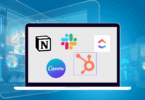Learn how to upskill employees in the age of AI and automation to stay competitive and future-ready in today’s workforce.
How to Upskill Employees in the Age of AI and Automation
In today’s rapidly changing world, knowing how to upskill employees in the age of AI and automation is more important than ever. As machines become smarter and routine tasks become automated, companies must equip their workforce with the skills needed to stay relevant and competitive.
Here’s how businesses can lead the charge in upskilling.
1. Understand the Skills Gap
Start by identifying which roles are at risk of automation and which emerging skills are in demand.
McKinsey estimates that by 2030, up to 375 million workers may need to switch occupations or acquire new skills due to automation. (Source)
Focus on skills that complement AI—like critical thinking, creativity, emotional intelligence, and digital literacy.
2. Promote a Culture of Continuous Learning
Upskilling isn’t a one-time event. It’s a long-term strategy.
Encourage employees to learn regularly through:
- Microlearning modules
- Weekly learning hours
- Peer-to-peer knowledge sharing
- Learning management systems (LMS)
Platforms like Coursera, edX, and LinkedIn Learning offer flexible online courses employees can take on their own schedule.
You can also create in-house training that reflects your company’s specific needs.
3. Invest in Digital Skills Training
AI and automation demand strong digital skills.
Train your employees in:
- Data analysis
- Cloud computing
- Cybersecurity
- Basic coding
- AI tools (like ChatGPT and other automation platforms)
For example, introducing your team to tools like Zapier or ChatGPT can streamline workflows and boost productivity.
4. Tailor Training Based on Roles
Not all employees need the same upskilling.
Use skills assessments or role-based training to personalize the learning journey. For example:
- A marketer may benefit from AI-powered analytics tools.
- An operations manager might need training in automated supply chain platforms.
- HR teams can learn to use AI for talent acquisition and retention.
Check out our post on AI Tools That Help Small Businesses Grow for practical software suggestions.
5. Use Real-World Projects and Mentorship
Learning by doing is powerful.
Create internal projects where employees can apply new skills immediately. Pair them with mentors or cross-functional teams to accelerate hands-on experience.
This boosts both skill retention and collaboration.
6. Make Learning Rewarding
Recognize and reward employees who complete training.
This could be through:
- Certifications
- Internal promotion tracks
- Public recognition
- Bonuses
Celebrating progress motivates others and builds a learning-first culture.
7. Monitor Progress and Adapt
Regularly evaluate the effectiveness of your upskilling programs.
Gather feedback, assess results, and iterate your training approach. What works for one team may not work for another.
Use internal surveys or platforms like Kahoot! and Typeform for engaging feedback loops.
Why It Matters
Knowing how to upskill employees in the age of AI and automation is not just an HR initiative—it’s a business necessity.
The companies that thrive will be those that see their workforce as an evolving asset, not a static one.
Upskilling protects jobs, increases productivity, and prepares your team for the future of work.
Related Articles from Fuzzy Port:







